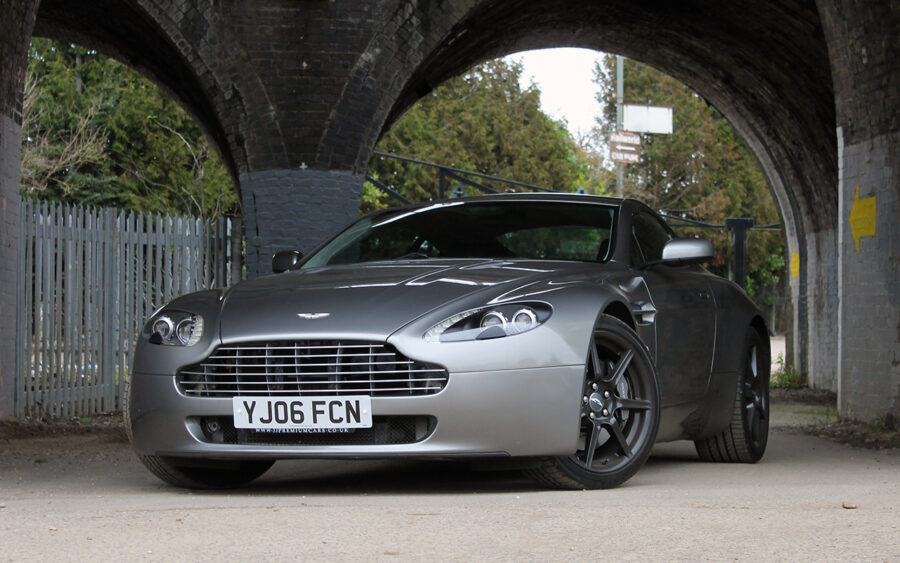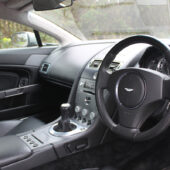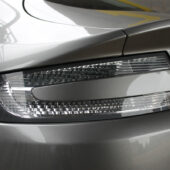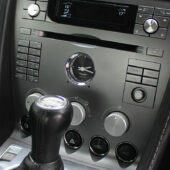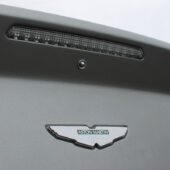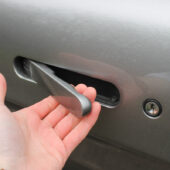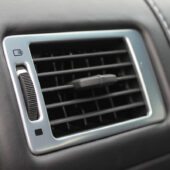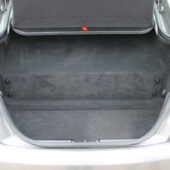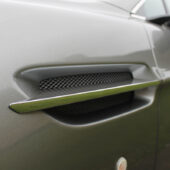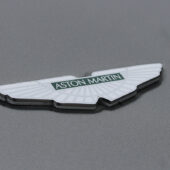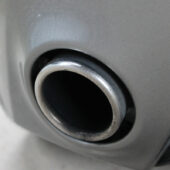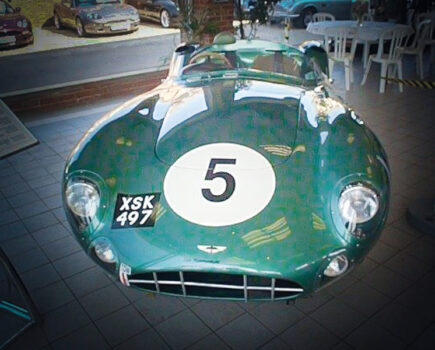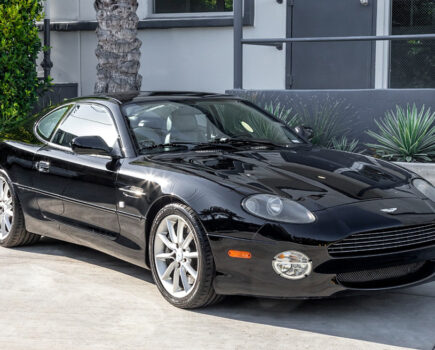The Aston Martin V8 Vantage took a familiar badge and put it on an all-new high-volume sports car in 2005. Here’s how to buy one today
Words: Kyle Fortune Images: James Howe
The Vantage badge was already a familiar one when in 2005, Aston Martin attached it to what would go on to be the company’s most successful model. The V8 Vantage was an all-new two-seat sports car aimed at the 997-generation Porsche 911; it was the least expensive model in the line-up, produced from 2005 right through to when its replacement was shown in 2017.
Powered in most guises by a V8 engine, Aston Martin also squeezed a V12 under the bonnet to produce the V12 Vantage, but it’s different enough in its specification to warrant a separate guide. The range is confusing enough without the V12: the V8 Vantage was developed and improved throughout its lengthy production run, spawning a number of special editions.
Aston Martin campaigned the V8 Vantage successfully in GT racing, spinning a number of special editions off its racing activity, it also doing good business globally with the Vantage as a turn-key race car for the GT2/3/4 categories. The Vantage also hit the dirt, with a Rally GT model sent to Prodrive to be developed into a rally car.
The production model was introduced at the Geneva Motor Show in 2005, having been hinted at in concept guise as the AMV8 Vantage at the North American Auto Show in 2003. The production car looked little different from the concept, which is no bad thing because it’s gorgeous.
That beauty wasn’t just skin deep; the Aston Martin also appealed as a proper driver’s car. The Vantage wasn’t a GT with a bit of sporting ability, but instead a sports car with a hint of GT potential. That’s key to its appeal, the chassis offering fine balance, and the engines plenty of character.

Power initially came from a 4.3-litre V8 that has some links to a Jaguar unit but is, in reality, unique to Aston Martin, with a key technical detail being a dry sump to allow the engine to sit low in the chassis. It wasn’t just low, but positioned far back, with the majority of the V8’s mass behind the front axle with a transaxle layout at the rear, its near-perfect 49/51 per cent front/rear weight distribution instrumental in delivering great handling.
That early 4.3-litre V8 engine produced 385hp at 7,000rpm and 410Nm of torque at 5,000rpm. Gearbox options were either the manual produced by Graziano, or an automated manual (paddle-shifted) from ZF, each with six ratios. The paddle-shift was named Sportshift, arriving a little later than the standard manual to production.
Addressing the early criticism of the 4.3-litre V8’s need for revs was the Sports Pack for the early cars, which boosted power to the same 406hp of the 2007 special-edition N400 (built in a numbered series of 480 examples, split equally between coupe and roadster models). Prodrive also offered performance upgrades for the Vantage, covering the engine, suspension, wheels and aerodynamics.
While the options packages would allow owners of existing cars a bit more power and agility, Aston Martin updated the core production car in 2008, adding a larger-capacity 4.7-litre V8, which upped the output to 426hp at the same 7,000rpm of the 4.3-litre, with torque growing to 470Nm at a higher 5,750rpm. More torque was produced earlier in the rev range, which improved the Vantage’s driveability at lower engine speeds.
Other changes that joined the new engine were revisions to the Sportshift’s software to speed up the gearchanges, with both the manual and Sportshift gaining a lighter flywheel for quicker response to the accelerator. Subtle revisions to the exterior looks, with some changes to the grille and lights and new wheel designs being about the sum of the outward changes, the interior gaining a new centre console and revisions to the seats.
The Vantage, somewhat unsurprisingly given its lengthy production run, saw many other spin-off specials, including the N420 in 2010 and the Vantage S in 2011 (with the new Sportshift II seven-speed transmission as well as a 436PS engine and some suspension and steering revisions to sharpen it further). The SP10 offered the same as the S, only with a manual transmission from 2013. The N430 arrived in 2015, while the ultimate V8 Vantage was be the GT8, powered by a 446hp version of the 4.7-litre engine and sporting overly styled aerodynamic additions to the bodywork.
Plenty of models to pick from, then – and with over 20,000 sales globally, there’s a thriving used marketplace out there for the Vantage. Find a good one and it shouldn’t be too expensive to own and run; it’s difficult to think of a better-looking – or sounding – car out there for the money.
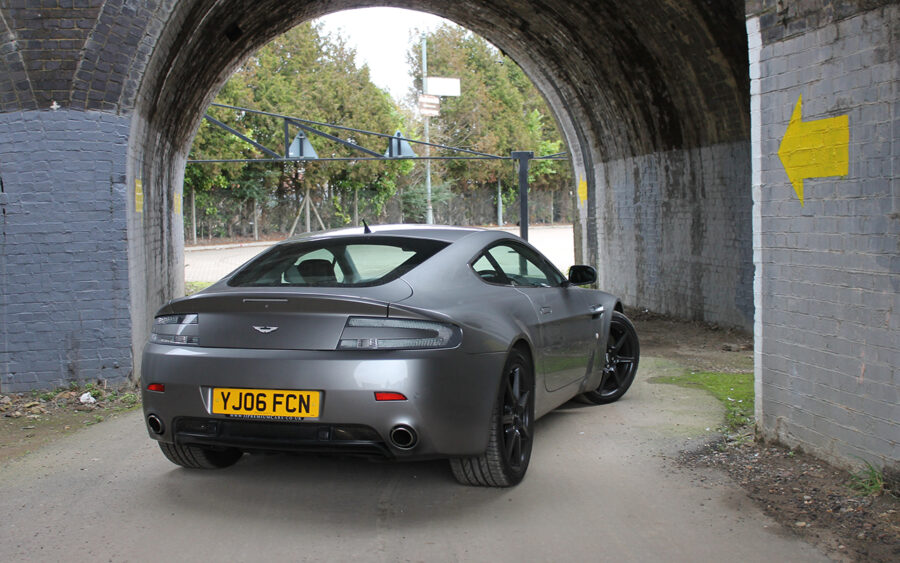
Bodywork
It’ll come as no surprise to hear that the Vantage is based on a development of the VH (Vertical Horizontal) extruded and bonded aluminium architecture that also sees service in the DB9 and Rapide. Strong and light, the Vantage’s platform is clothed in a body that’s a mix of composite and aluminium panels.
A V8 Vantage is more likely to have been used daily than its more expensive V12 relations, so be sure to have a good look around for any signs of accident damage. Like any model from this era of Aston Martin, the Vantage might develop paint bubbling around the bottom of the doors, the A-pillars (near the bottom of the windscreen) around the wheelarches, or any area where different materials meet. Check the bottom of the mirror mounts, parking sensors, door handles, the vents in the front wings, around the grille, or any areas where paint has been chipped or scratched. The grille can lose its lustre, and the paintwork on the uprights behind it flake off, but it’s relatively simple to polish and paint these to rectify that. Check the wheels for any damage and have them repaired before any purchase.
Check any drainage holes in the body aren’t blocked, because if they are water can get into the cabin – wet carpets an obvious sign. The tailgate is known to leak a bit on the coupe, so it’s best parked under cover if it’s not going to be used frequently.
If you’re after the open-topped Roadster model, make sure you check the operation of the roof a number of times; don’t just take the word of the seller that it works. If the seller is not happy to let you let you open and close it several times, walk away.
Condensation in lights front and rear isn’t uncommon, with Aston Martin having produced a service bulletin which suggests drilling a hole in the sealed units to let it dry out, then re-sealing it. Failing that – or if any moisture has shorted the circuitry – you’ll be looking at buying a new set at serious expense.
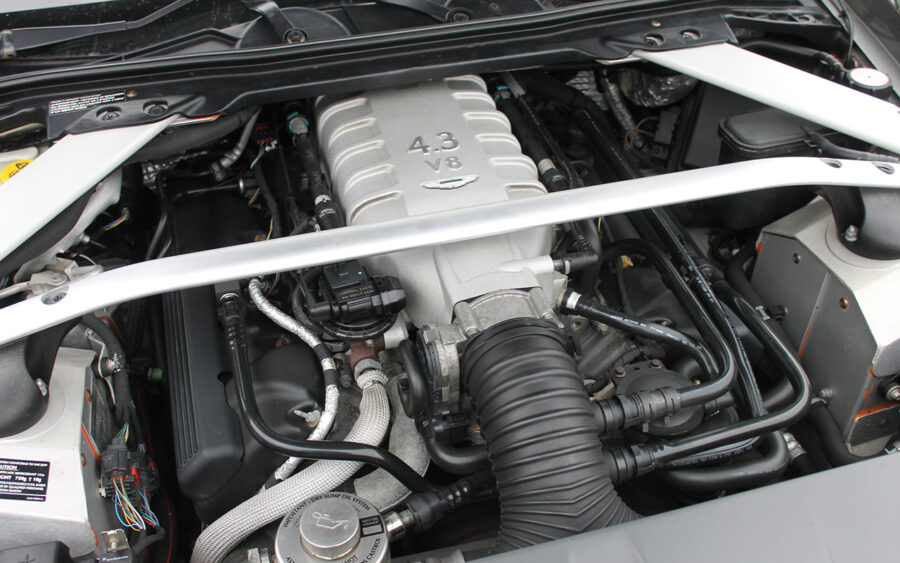
Engine and transmission
John McGurk from independent Aston Martin sales and servicing specialists McGurk Performance Cars, says: “V8 engines are good, although as with any Aston Martin it’s crucial you keep on top of servicing regardless of how often it’s used.”
Have your V8 Vantage serviced every year as a minimum, and, if you’re doing decent miles, more often. As a minimum it’s worth checking the oil before any drive; it’s no hardship to open the bonnet and look at the V8 snuggly situated far back and under a brace between the two front suspension struts. While you’re doing so, keep an eye out for leaks around the timing cover. Don’t wait to see drips on the floor because the V8, like all modern-era Astons, has a flat underbody which catches tell-tale drips at least until enough has pooled there to find a way out.
“Sometimes the 4.7-litre engines can make a tapping noise; it’s normally down to shim adjustment,” explains McGurk. “It’s something that should have been in Aston Martin’s service schedule; it’s not, and it needs to be. It means that the gap’s getting too big and the cam lobes will punch a hole in the shims, and that’s big trouble. It’s a big job: cam covers need to come off because there are two cams on each side.” Otherwise, McGurk says, the engine on the V8 are really good.
As are the gearboxes, although the ASM pump and associated pipework for the Sportshift gearbox need checking. If they fail, all fluid can be dumped and you’re going nowhere.
Otherwise, it’s a case of keeping on top of servicing and replacing fluids – more often than as per Aston Martin’s schedule makes sense – while it’s imperative that you keep the battery in tip-top condition. If it loses charge it can throw up all sorts of issues – get a good quality trickle charger/conditioner and plug it in when the car is parked up.
The exhaust should be in good condition, and make sure the valves work, with some buyers pulling the fuse that operates it (No. 22 apparently, or 15 on later cars) to hear the full breath of the V8’s soundtrack from cold start.
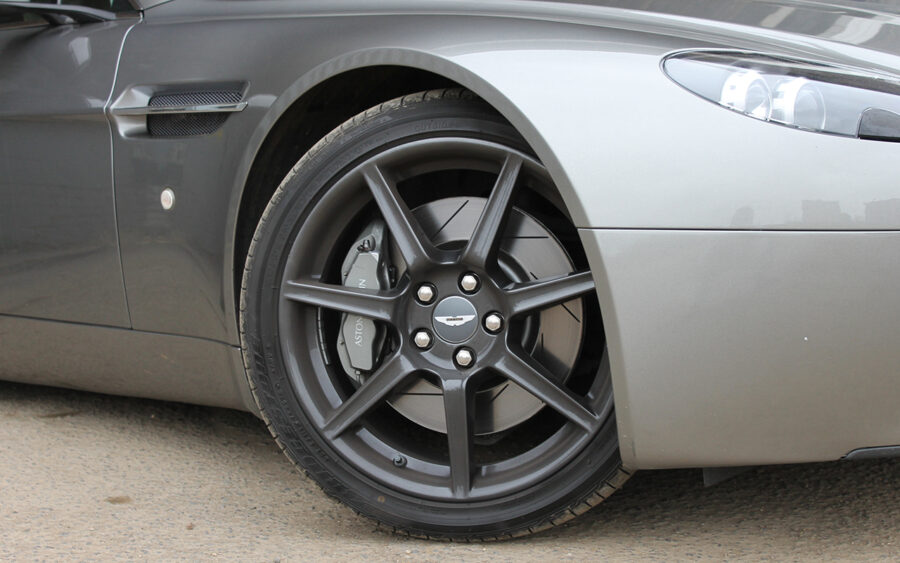
Suspension, steering and brakes
Nothing too much to worry about in relation to the Aston Martin V8 Vantage’s multi-link suspension, with only the usual wear and tear from use to look out for. Any worn bushes will result in less-than-accurate handling, and any odd tyre wear will point to this too, as well as geometry that’s out of kilter. It’s all a relatively easy and inexpensive fix unless any of the re-alignment bolts have seized.
Check the shocks for any leaks, and springs for any cracks or breaks. Likewise, check the condition of the brake pads and discs, although replacement of these is typical service procedure and not too costly.
All the suspension hangs off sub-frames made from steel, which can rust. It’s worthwhile checking the condition of these because if the rot really sets in it’s structural and a replacement will be required. Taking the subframe off, cleaning it up and putting on a new covering of powdercoat will cost something in the region of £1,500; do that and it’ll last a good while before it needs looking at again.

Interior and trim
The interior is relatively straightforward, although if you’re getting out of anything that’s been built in the past five years or so, the sat-nav will feel very antiquated. It pops up from out of the top of the dash, or at least it should, with the plastic cogs that make it do so prone to failing. The early sat-nav was a Volvo system, replaced later by a Garmin item with Aston Martin branding. Neither is great so it’s worth exploring an aftermarket connection with your smartphone if you want decent navigation.
The seats should be firm and supportive; bolsters will wear on higher mileage cars. Likewise, the dash-top leather is known to shrink, although it’s nothing a decent trimmer can’t fix or replace.
Aston Martin V8 Vantage: our verdict
Aston Martin’s biggest-volume model to date is also one of its most compelling purchases when used. The V8 Vantage is still gorgeous and good to drive, while reliability – if it’s been properly looked after – should be good.
Any Aston Martin V8 Vantage is great so buy the best and newest example you can. Make sure it’s a model with proven history and signs of enthusiastic previous owners – do that, and you’ll do well. And at current prices, you’re likely to get a better example of the Aston than of its main German rivals.

